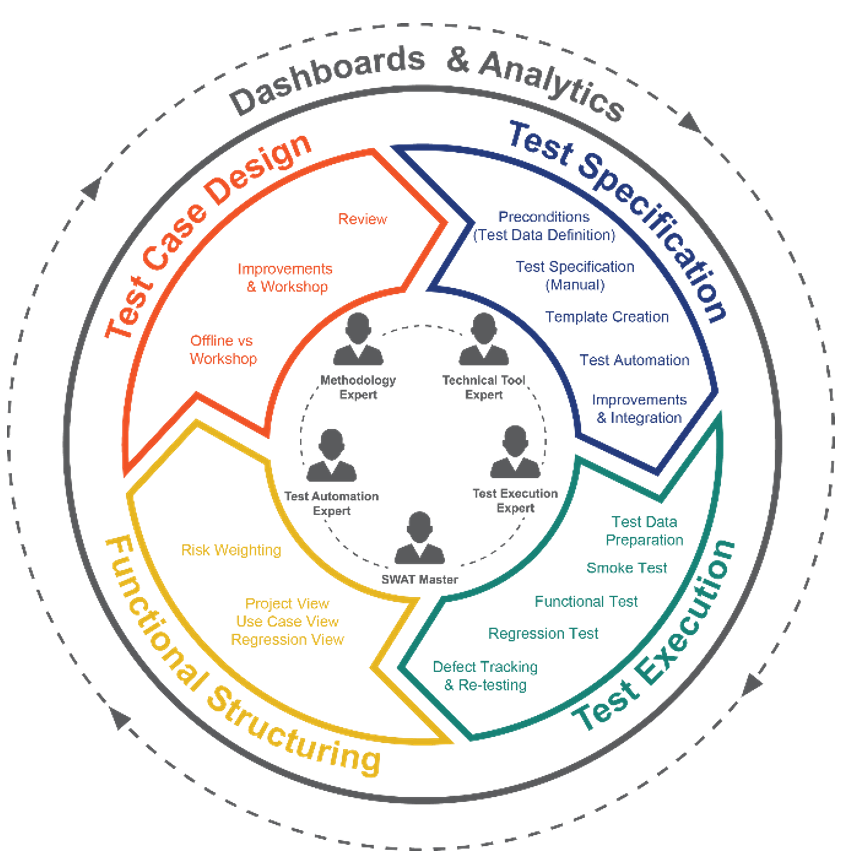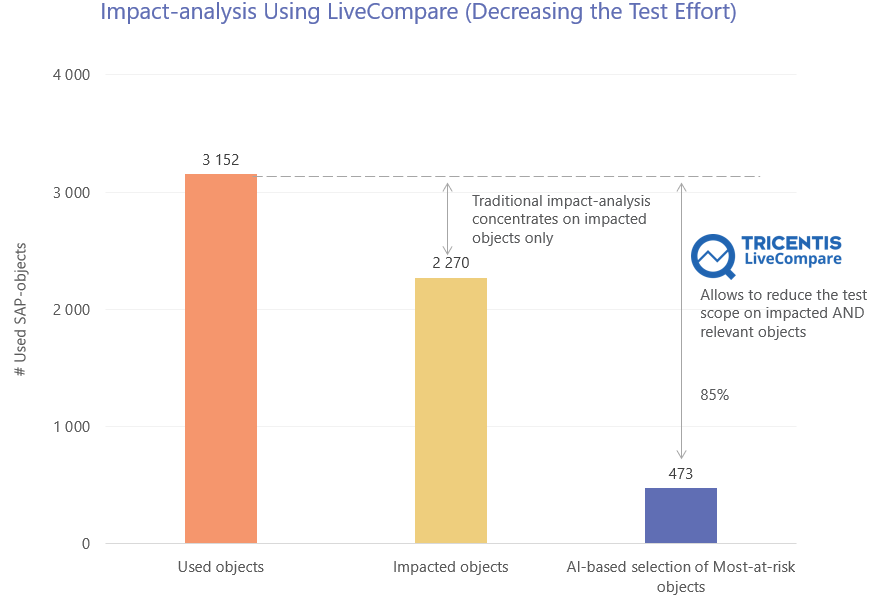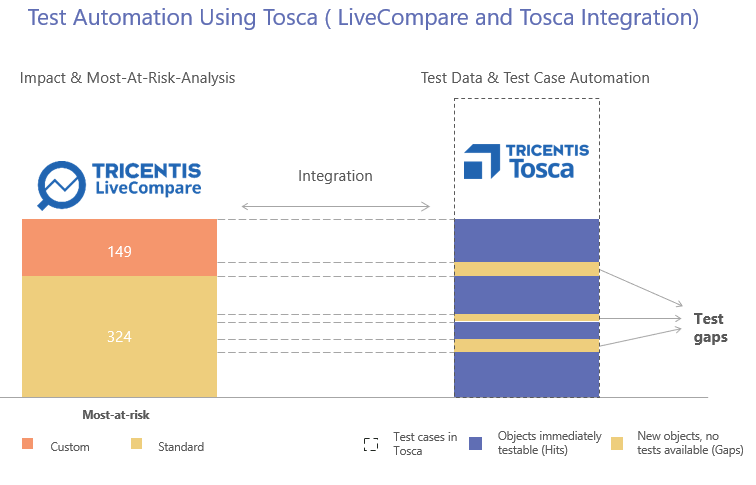If you are an SAP customer, especially an enterprise IT leader, SAP solutions are most probably the backbone of your digital transformation. If you are running late with updates, planning a move of your existing SAP system to S/4HANA (which you will need to do by 2027 at the latest) or the cloud, or need hypercare after upgrades, the time has come for a change.
Due to overly complex projects and the need to carry out several releases per year in the future, SAP customers are encountering a new and unfamiliar situation. At the same time, particularly large companies are still hesitant about the transformation, which will inevitably lead to a project holdup by no later than 2022.
In the event of a holdup, there will be a significant bottleneck for SAP customers, as the systems that have been built and customized for around 20 years, now must be changed due to a significant disruption. These changes in the business model must be implemented faster than ever, so we can all expect an upcoming transformation and the increase in the number of SAP releases paired with the faster implementation of business requirements. As a result, minimizing risk is of the highest priority, and that’s where testing comes into focus. But most SAP testing is still manual, teams do not know what exactly needs testing and why, and testing takes place in a late phase of the development process, in which troubleshooting is already expensive and results in time delays of the project and increases the risk of defects.
The test activity therefore has to be carried out by the business or a third party, and one has to resort to other possibilities to achieve a short cycle time for the projects.
Sixsentix suggests re-establishing the topic of the SAP tests. The business department will continue to play an important role in testing when it comes to setting the right course early in the development process regarding the use of new functionality. But when it comes to ensuring that existing functionality does not break due to changes (these tests are called regression tests), the machine will be needed! This is the core task of automated testing.
“A fully automated testing process can bring more than 50% or more efficiency gains in SAP testing processes.“ – 2021 SAP Business Assurance Report
The increase in the speed of software development can only be ascribed to the use of automated tests. The shorter the release cycles, the lower the effort for the business department to lend a hand. Only then is it possible to gain objective knowledge about the effects a planned change has on business processes and which areas need to be tested (and ultimately also automated) to massively reduce the risk of the release and subsequent production problems. It is not about automating everything, but rather those test cases that cover the greatest risk. Only when combined with a clever quality assurance strategy is it possible to master the problem areas and at the same time save costs and resources.
SAP S/4HANA Migration QA Assessment
Within this assessment, the client can find out what technical implications effects they can expect. To do this, the client’s existing SAP system is compared with a standard S/4HANA system. This is provided by Sixsentix and corresponds 1:1 to the SAP modules the client uses. By providing a detailed report, the client receives the following information, such as which custom code must be revised before the S/4HANA transformation; which custom code does not have to be transformed because the function is included in the S/4HANA standard; the effects on the surrounding systems: which interfaces will break, which of the client’s custom IDOCs, BAPIs, BDCs, ODATA and call transactions are affected; the effects on roles, profiles, and authorizations; which data and transactions are not used now and do not have to be migrated. All these findings support the client in determining the transformation strategy or underpinning it with data.
The result and advantages of the change impact analysis are presented using a specific SAP transport order. The client is free to choose the size of the transport, regardless of whether the client wants to import several SAP support packs, enhancement packs or make individual adjustments.
By using the change impact analysis, the changes in the SAP transport are compared against the QA system, overlaid with usage data from production and evaluated regarding the risk of the change due to the in-depth knowledge of the SAP object structure. The client will receive a detailed report that identifies those SAP objects that absolutely must be tested to fully cover the risk of the planned release.
The application of the change impact analysis leads to a reduction of the objects to be tested by up to 85% per release. Not everything that is affected by changes must be tested. Before each release, the client’s business department will know what exactly needs to be tested and eliminate unnecessary tests. The test effort in the department is significantly reduced. At the same time, the analysis provides the basis for setting up and executing automated tests.
Sixsentix automates the business process (with 5 test cases maximum) of the client’s own choosing. In the final presentation, the execution of the automated test cases is shown live, and the operation of the software is explained using the examples. In addition, the client will learn about the possibilities for generating test data in the SAP environment.
Test automation is the key to accelerating the number of releases while simultaneously reducing the test effort in the business department and increasing the delivery quality. Test automation shows its strengths when it comes to the repeated test execution, ensuring that the existing functionality does not unexpectedly run into errors while importing changes.
The client will receive an ROI calculation from Sixsentix to answer the above question as to whether the change in the test strategy pays off using change impact analysis and test automation.
SWAT (Software Agile Testing) Approach
Sixsentix’s unique risk-based Continuous Testing approach, paired with QACube Visual Analytics for DevOps, provides business with unprecedented quality and transparency across software delivery projects for faster time-to-market.
The Sixsentix Software Agile Testing (SWAT) approach includes a proactive, innovative, and fundamentally different approach to professional standardized testing. It helps customers optimize their testing by minimizing the number of test cases and highlighting the risk contribution of each test case.

Sixsentix SWAT approach
With this approach, the Sixsentix team enables the client to assess their aggregated risk coverage from the business, technical, performance and compliance perspectives and thus, improve greatly the feedback cycle to mitigate any project and product risk. Sixsentix delivery model is flexible for large scale, complex or specialty testing services with the right combination of Onsite, Nearshore and Blended resources. The end result is effective and efficient software testing where and when it is most needed throughout SDLC lifecycle, with the testing outcomes at significantly lower costs and helping customers with scalability to keep pace with digitalization. Sixsentix has been recognized as a leading expert in Tricentis Tosca Testsuite (world market leader from Vienna according to Gartner and Forrester), and for testing visibility across solutions, including HP QC Enterprise, SAP and such.
SAP S/4HANA Migration Test Management
There are two important phases of the Sixsentix’ approach:
- Preparation phase for the migration that lasts about 8 weeks
- The actual migration weekend
The preparation phase means that all departments in all client locations working with this SAP system were asked to provide the test scope. The client’s specific team in each of these locations had to be guided on how to set their test scope and test plan. Sixsentix Test Manager coordinates this phase and tracks the test progress and results of the test system (Quality system).
The goal of this phase is to have everything properly and thoroughly set for the migration weekend, such as test scope definition, identifying risks in testing aspect, nominating testers and setting their availability, test effort estimation, defining test environments. Sixsentix also supports key users in order to do the testing in a controlled way.
On the migration weekend, the testing of the system to be migrated (Production system) takes place and Sixsentix coordinates this process and prepares the reports for the Go/No-Go decision. The goal of the test management during the migration weekend is to align all activities, track all test results and enable the management from the client’s Business and IT departments to make a sound, fact-based Go/ No-Go (migration roll-back) decision.
AI-Powered Tools for Optimal Outcomes
Sixsentix recommends using the latest, state-of the-art tools to support the client’s SAP activities:
- Tools for patching, such as, LiveCompare from Tricentis, which help the client accelerate the SAP updates and ensures zero-defect releases. Today, best-in-class organizations use AI-powered smart impact analysis to make their testing more efficient, so they can release to production with zero defects and eliminate the need for hypercare altogether.

- Tools such as Tosca, a model-based testing tool from Tricentis, intended for testing the whole environment. In mid-2020, Tricentis and SAP announced a strategic partnership – Tosca is therefore a part of the SAP ecosystem. The basic version of Tosca is available without additional license costs. For more extensive projects, SAP Enterprise Continuous Testing should be used. With SAP Change Impact Analysis, it is also possible to quickly and efficiently identify the areas that need to be tested. This results in a significant reduction in test cases (up to 85%).

Client case study
The preparation and test coordination before and on the migration weekend, leading to a successful migration of SAP applications from the client’s own data centre into a cloud system without any major defects – all users were able to start their usual work on the next day.
The largest manufacturer of industrial trucks (e.g., forklifts and similar devices) in Europe and the second largest in the world, as well as a global leader in automation technology, decided to migrate their SAP applications to a Cloud system, which would bring them the needed scalability in business operations. To perform this transformation successfully, the client had to do the migration, but also the testing of every system, to make sure that the functionalities are defect-free for 10,500 users affected by the transformation itself.
Sixsentix coordinated the testing preparation for the SAP migration weekend and managed the testing during the migration itself, helping the client migrate all relevant SAP data with almost zero downtime.
Value Delivered by Sixsentix Approach: The most important goal of smooth transformation was accomplished, which brought a major benefit for the customer: flexibility regarding the scalability of the new SAP Cloud system.
Results:
- Before the ‘Go/No-Go’ decision meeting in which the management decides whether to proceed with the migration or do the roll back, no defects were open – there were no failed test cases/applications in the migration
- There were 250 people involved in this project from the client’s side that Sixsentix coordinated
- There were 140 applications to be migrated
- 560 hours of tests were invested during the migration weekend
“In the last quarter of 2020, we placed our business focus on migrating all our production SAP applications to cloud system. Accomplishing this with zero failure was a challenging task. We relied on Sixsentix experts to support us with the test management, and to help us structure our testing data and improve our migration testing methodology. Additionally, thanks to Sixsentix, our management was able to make a sound Go/No-Go decision. All of these exceptional efforts resulted in the complete success of the migration project” – Senior Director IT Management, The largest manufacturer of industrial trucks in Europe.
What are the benefits of the Sixsentix SAP testing practices?
With the Sixsentix SAP S/4HANA migration QA assessment, the client gets a technical, objective insight into the S/4HANA transformation effects on their SAP landscape. Even if the client already has a defined transformation strategy (Greenfield, Brownfield or a Hybrid), the results of the analysis can underpin or sharpen it. The client understands the value of the change impact analysis not only as a part of the planned S/4HANA transformation, but, even more importantly, as a part of day-to-day SAP operations. The contribution and the mode of test automation operation are clearly presented. By using the change impact analysis in combination with test automation, the client can massively reduce the test effort in their department, and at the same time increase the quality and release frequency. The ROI calculation shows that the investment in changing the client’s test strategy yields a profit after a short time.
Sixsentix SWAT Approach ensures a systematic delivery with the highest automation rates with minimal business risk and optimized efficiency, thus helping the client to meet their market needs. Sixsentix can apply this unparalleled solution to any industry which requires the highest quality of Software Testing and has a zero tolerance for software failure.
Sixsentix SAP Migration Test Management thoroughly prepares all the testers in advance, so that the testing on the migration weekend gets performed without any impediments and enables the client’s management to make the accurate Go/ No-Go decision.
Sixsentix is a leading provider of Software Testing Services, QA Visual Analytics and Reporting, helping enterprises to accelerate their Software Delivery. Our unique risk-based Testing and QACube ALM Reporting and Dashboards, provide business with unprecedented quality and transparency across Software Delivery projects for faster time-to-market. Sixsentix customers include the largest banks, financial services, insurance, telecom providers and others. Sixsentix Onsite, and Nearshore (SWAT) services deliver optimized testing outcomes at significantly lower costs and help customers with scalability to keep pace with digitalization.

